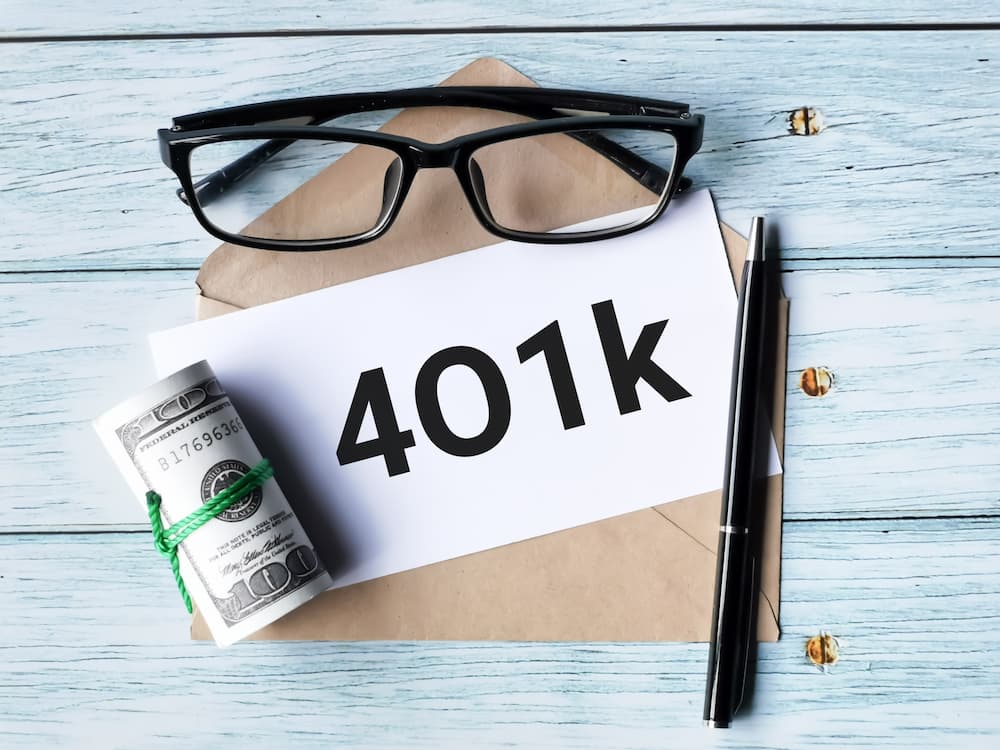When it comes to planning for retirement, it’s never too late to start.
As you approach your golden years, you might find that you haven’t saved as much as you’d hoped.
Don’t worry – there’s a solution for seniors to boost their retirement savings: catch-up contributions.
Catch-up contributions are extra amounts that people aged 50 and older can add to their 401(k)s, IRAs, and HSAs.
These additional contributions help you make up for any lost time and get your retirement savings back on track.
In this article, we’ll explore the ins and outs of catch-up contributions and share practical tips to help you make the most of your retirement savings.
So, let’s dive in and learn how you can secure a more enjoyable retirement.
The Nitty-Gritty of Catch-Up Contributions
Catch-up contributions offer a golden opportunity for those aged 50 and older to bolster their retirement accounts beyond the standard annual contribution limits.
These additional deposits can be a game-changer, particularly for those who might have struggled to save during their earlier years.
In 2023, the IRS permits individuals aged 50 and older to contribute an increased amount to their 401(k)s and IRAs, surpassing the usual annual contribution cap.
For example, a 50-year-old can contribute a maximum of $30,000 to their 401(k) or other workplace retirement plan in 2023.
By harnessing the power of catch-up contributions, you could potentially grow your 401(k) account to over $700,000 by the time you reach 66, assuming you let the funds accumulate without making any withdrawals.
401(k) and IRA Contribution Limits: The Fine Print
The maximum annual contribution limits for 401(k) plans and IRAs are subject to annual adjustments.
In 2023, the cap for 401(k) plans is set at $22,500, but individuals aged 50 and above can make an additional catch-up contribution of $7,500.
This means that seniors in this age bracket can deposit up to $30,000 into their 401(k) plans during that year.
For IRAs, individuals aged 50 and above face a maximum contribution limit of $7,500 in 2023, which factors in a catch-up contribution of $1,000.
Keep in mind that these contribution limits are subject to change, so it’s essential to consult your plan administrator or financial advisor for the most up-to-date figures.
To initiate catch-up contributions to your 401(k) plan or IRA, get in touch with your plan administrator or access your account online.
You can then adjust the contribution amount for each pay period as needed.
By taking full advantage of catch-up contributions and other strategies to optimize your retirement savings, you’ll be better positioned to dodge investment pitfalls and safeguard your nest egg.
To further mitigate risk, consider diversifying your investments and seeking guidance from a financial advisor.
It’s worth noting that a relatively small percentage of eligible participants take advantage of catch-up contributions.
If you’re 50 or older, it’s prudent to explore the option of contributing an additional amount to your 401(k), beyond the standard 2023 limit of $22,500.
By doing so, catch-up contributions can potentially save you a significant sum in taxes, especially if you’re already maxing out your 401(k) contributions.
Catch-up contributions empower older workers to augment their retirement savings during a critical period by injecting extra funds into their accounts.
In 2023, employees with employer-sponsored retirement plans such as 401(k) or 403(b) can contribute an extra $7,500, provided they’re at least 50 years old.
Over a 15-year span, catch-up contributions exceeding $100,000 can help bridge the gap between projected expenses and anticipated cash flow throughout a typical 20- to 25-year retirement period.

Eligibility Requirements for Catch-Up Contributions
To leverage this strategy, you’ll need to meet specific eligibility criteria, encompassing age and employment status.
Age Requirements
For the privilege of making catch-up contributions to your retirement nest egg, you must have reached the age of 50 or older during the calendar year.
This rule applies to an array of retirement accounts, including 401(k) plans, IRAs, 403(b) plans, and 457(b) plans.
Employment Status
In the pursuit of catch-up contributions, it’s imperative that you’re gainfully employed and actively participating in a retirement plan.
Fear not, self-employed individuals—you too can capitalize on catch-up contributions via Solo 401(k) plans or SEP IRAs.
Contribution Limits
Navigating catch-up contributions necessitates a keen awareness of contribution limits to avert penalties or taxes.
For 401(k) aficionados, the standard contribution limit in 2022 stands at $20,500, escalating to $22,500 in 2023.
Meanwhile, individuals aged 50 or older can toss in an extra $6,500 in 2022, and $7,500 in 2023, culminating in a grand total of $27,000 in 2022 and $30,000 in 2023.
As for the IRA enthusiasts, the standard contribution limit is a cool $6,000, with an additional $1,000 catch-up contribution permitted for those aged 50 or older.
This translates to a total IRA contribution limit of $7,000 for eligible individuals.
Starting in 2024 IRA contribution amounts will be indexed for inflation, allowing individuals aged 50 and older to contribute more to their traditional or Roth IRAs over time, with catch-up contributions increasing in increments of $100
Retirement Account Options
Juggling multiple retirement accounts, such as a 401(k) plan and an IRA, demands careful consideration of your overarching retirement savings objectives and your progress thus far.
In some instances, alternative savings vehicles may be more advantageous, like a Health Savings Account (HSA) for those with high-deductible health plans, or a taxable account for individuals who’ve maxed out their retirement contributions.
Utilization of Catch-Up Contributions
It’s crucial to note that not all eligible individuals seize the opportunity to make catch-up contributions.
A Vanguard analysis of 401(k) plans revealed a mere 16% of participants capitalizing on catch-up contributions.
This statistic underscores the importance of proactively evaluating your retirement savings approach and ensuring you’re optimizing your resources for a comfortable retirement.
Catch-Up Contribution Limits
Catch-up contributions are a boon for individuals aged 50 and older, giving them the opportunity to bolster their retirement savings by contributing above the standard IRS limits for various retirement accounts, such as 401(k) plans, IRAs, and HSAs.
Capitalizing on catch-up contributions can substantially enhance your retirement nest egg, helping to bridge any savings gap from previous years.
401(k) Contribution Limits
In 2023, the 50-plus age group can contribute a total of $30,000 to their 401(k) plans, encompassing an extra catch-up contribution of $7,500.
This is in addition to the standard contribution limit of $22,500 for employees under 50.
Just remember that your 401(k) contributions cannot exceed 100% of your annual salary.
Many employers generously match their employees’ 401(k) plan contributions. Approximately 85% of employers offer a 401(k) match, with 10% providing non-matching contributions without necessitating employee contributions.
Traditional 401(k) contributions are made pre-tax, which lowers your taxable income, while withdrawals during retirement are taxed at your marginal tax rate.
IRA Contribution Limits
The 2023 combined contribution limit for both traditional and Roth IRAs is $6,500.
However, if you’re 50 or older, you can make an extra catch-up contribution of $1,000, raising the total limit to $7,500.
This limit is the sum of all your IRA account contributions, not the limit for each account.
Keep in mind, Roth IRA contributions might not be tax-deductible if you or your spouse contribute to a workplace retirement plan.
That said, Roth IRA withdrawals during retirement are tax-free if certain conditions are satisfied.
HSA Contribution Limits
Health Savings Accounts (HSAs) also present a catch-up contribution opportunity for individuals aged 55 or older.
In this scenario, you can contribute an extra $1,000 annually, over and above the standard HSA contribution limits.
If both you and your spouse are 55 or older, you can each contribute an additional $1,000 to your respective HSAs.
HSAs offer a triple tax advantage: you can enjoy tax-deductible contributions, tax-free earnings growth, and tax-free withdrawals for qualified medical expenses.
This makes HSAs an invaluable resource for saving for healthcare costs both now and during retirement.
By leveraging catch-up contributions for 401(k) plans, IRAs, and HSAs, you can significantly expand your retirement savings, paving the way for a more comfortable and secure retirement.

The Benefits of Making Catch-Up Contributions
Seniors who capitalize on catch-up contributions can reap the rewards of tax advantages, employer matching, and long-term growth.
Tax Benefits
A significant benefit of making catch-up contributions to a 401(k) plan is the tax advantage.
Since catch-up contributions are pre-tax, they reduce your taxable income, ultimately lowering your adjusted gross income.
This reduction can affect other tax benefits, allowing you to save more on taxes while boosting your retirement savings.
In 2022, the catch-up contribution limit for workers aged 50 and older stands at $6,500, in addition to the standard $20,500 limit.
In 2023, the catch-up limit increases to $7,500, raising the total possible 401(k) contribution for individuals over 50 to $30,000.
By maximizing your 401(k) contributions, you can enjoy significant tax savings.
Employer Matching
When your employer offers a matching contribution to your 401(k) plan, it’s crucial to contribute enough to secure the full match before venturing into catch-up contributions.
Maximizing employer matching contributions can provide a substantial boost to your retirement savings.
For example, if you earn $50,000 annually and contribute 6% of your salary ($3,000), a 50% employer match would add an extra $1,500 to your 401(k) plan.
By leveraging catch-up contributions, you can further benefit from employer matching contributions, enhancing your retirement savings significantly.
However, it’s essential to note that not all employers provide matching contributions for catch-up contributions.
Always review your employer’s 401(k) plan details to determine eligibility for catch-up contribution matching.
Long-Term Growth
Catch-up contributions can play a vital role in accumulating more money for retirement, which, over time, can experience compounded growth.
When you contribute to your employer’s 401(k) plan, tax-deferred growth works in your favor, as you won’t pay income tax on your earnings until you withdraw them during retirement.
Additionally, catch-up contributions can amplify the power of compound interest, further augmenting your retirement savings’ potential growth.
Even after maxing out your retirement account contributions, you can still capitalize on long-term growth and compounding by investing in a taxable account.
However, bear in mind that investing in a taxable brokerage account subjects your earnings to long-term capital gains tax.
Another avenue for seniors to bolster their retirement savings is by contributing to an Individual Retirement Account (IRA).
In 2022, adults aged 50 and older can contribute up to $7,000 to an IRA, with the limit rising to $7,500 in 2023.
By strategically utilizing catch-up contributions in both 401(k) plans and IRAs, seniors can significantly enhance their retirement savings and secure a more comfortable retirement.
How to Make Catch-Up Contributions
For individuals aged 50 and above, the IRS permits additional contributions to various retirement accounts, including 401(k), 403(b), most 457 plans, and the government’s Thrift Savings Plan.
In 2023, the catch-up contribution limit for these accounts stands at $30,000. Furthermore, you can contribute an extra $7,500 to all your IRAs once you reach the age of 50.
Initiating Catch-Up Contributions
Embarking on catch-up contributions is a straightforward process; you can either contact your plan administrator or access your account online.
The deadline for making these additional contributions coincides with your income tax return filing due date.
By seizing this opportunity, you can substantially augment your retirement savings, paving the way for a comfortable post-retirement lifestyle.
Strategize Your Investment Allocation
Incorporating catch-up contributions into your retirement savings plan necessitates prudent investment allocation.
While equities offer the potential for higher returns, diversification is vital for risk mitigation.
One widely accepted rule of thumb for stock investments is the “100 minus age” principle, which dictates that you allocate a percentage of your portfolio to stocks based on this calculation.
Nevertheless, individual circumstances and risk tolerance may warrant adjustments to this guideline. Consulting a financial advisor is advisable when determining the optimal investment allocation tailored to your needs.
Align Contributions with Retirement Objectives and Timeframe
As you contemplate catch-up contributions, considering your retirement goals and timeline is essential.
This evaluation enables you to design a retirement savings plan that aligns with your unique aspirations and financial requirements.
For instance, if you foresee the need for higher retirement income, more aggressive savings or investment strategy adjustments may be necessary.
Collaborate with a Financial Advisor
Engaging a financial advisor can prove invaluable in navigating the complexities of retirement planning, from investment strategies to tax considerations.
These professionals can assist you in crafting a retirement savings plan tailored to your specific needs and objectives.
By leveraging the expertise of a financial advisor, you can optimize your catch-up contributions, positioning yourself for a secure and comfortable retirement.

Tips for Effectively Using Catch-Up Contributions
These contributions, available to seniors, allow them to outpace their younger counterparts by contributing more to their retirement accounts, thereby capitalizing on tax benefits and potentially growing their nest egg more significantly.
Maximize Your 401(k) Contributions
One potent strategy to harness the power of catch-up contributions is by maximizing your 401(k) input.
As you approach retirement, it’s crucial to prioritize funding your 401(k) as soon as possible and to the fullest extent.
This retirement savings vehicle, with its higher annual 401(k) contribution limit for those aged 50 and over, may prove challenging for some workers who struggle to contribute $27,000 or $30,000 to their retirement accounts.
However, if you can manage to maximize your contributions, you’ll significantly reduce your current tax bill while bolstering your retirement savings.
In fact, by contributing an extra $7,500 to your 401(k) if you’re 50 or older, you can save an additional $2,275 in taxes compared to not making catch-up contributions.
Fund Your Roth IRA
Besides optimizing 401(k) contributions, seniors should also think about funding a Roth IRA.
By fully allocating funds to their 401(k) and contributing to a Roth IRA, seniors can save and grow their money tax-deferred.
Roth IRA investments and subsequent conversions are tax-free, allowing your money to compound and be withdrawn tax-free, ultimately prolonging the longevity of your funds during retirement.
Leverage Your Home Equity
Tapping into home equity is another avenue to boost retirement savings.
Seniors can access their home equity by borrowing against it or selling their primary residence and downsizing to a smaller, more affordable property.
This approach can provide additional funds for retirement, but it’s important to carefully assess the impact on monthly income and evaluate current market conditions before making any decisions.
Take Advantage of Tax Deductions
Maximizing retirement savings also involves making the most of tax deductions.
If you have substantial mortgage interest, deductible taxes, unreimbursed business-related expenses, or charitable donations, it’s prudent to itemize your deductions.
This strategy can help lower your tax bill and facilitate greater savings for retirement.
Consider Disability Insurance
It’s essential for seniors to investigate cost-effective disability insurance options through their employer or professional association.
Disability insurance offers financial protection in the event of an inability to work due to disability or illness, preventing the need to dip into retirement savings and potentially jeopardizing your retirement plans.
Start Early and Contribute Regularly
Lastly, it’s crucial for seniors to kick off contributions to their retirement accounts as early as possible and maintain regular input.
By adding extra funds to your 401(k) starting at age 50 and postponing retirement until 65 or older, you could potentially save nearly $100,000.
To safeguard your current and future savings, steer clear of making early withdrawals from retirement accounts.
Establishing an emergency fund is essential in the event of unforeseen expenses, and it’s crucial to expeditiously pay off high-interest debt.
Final
To secure a comfortable retirement, it’s essential for seniors to make the most out of their savings opportunities.
Catch-up contributions are a valuable tool designed for individuals aged 50 and over, allowing them to contribute more to their 401(k) and IRA accounts.
To effectively use catch-up contributions, remember to keep it simple and follow these practical steps:
1. Start early and contribute regularly to your retirement accounts.
2. Maximize your 401(k) and IRA contributions, aiming for the catch-up limits if possible.
3. Look into funding a Roth IRA for additional tax-free growth.
4. Be mindful of tax deductions and itemize them when possible.
5. Consider disability insurance for financial protection.
6. Seek advice from a financial advisor to help tailor your retirement savings plan.
By adhering to these guidelines and focusing on catch-up contributions, you’ll be better equipped to enhance your retirement savings and ensure you have the means to enjoy your golden years to the fullest.










